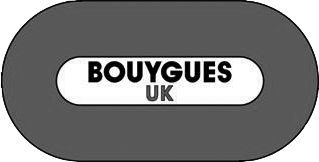June 20, 2016 10:25 am
Understanding when and where Helical Piles are the best solution in building is dependent on first understanding their purpose. Any foundation needs to be strong enough to support and to bear the weight of whichever structure rests above it. When we look at traditional foundations we come to realise that they are inherently weak. Varying soil conditions, water or plant life can all contribute to the detriment of a traditional foundation meaning that the building it supports can suffer damage. As moisture seeps into the fabric of the building, walls can crack or bow, floors can list and within the building, the weakness of the traditional foundation becomes all to apparent. In some areas, flood prone areas in particular, it...
June 13, 2016 1:23 pm
Helical piles are a geotechnical engineering feat with a strong, varied history of use. Read on to find some examples which may surprise you. Helical Piles Were First Used as River Moorings for Ships The first documented use of helical piles was in 1836, in which their recorded function was as river moorings for ships. These river moorings (also called ‘pile moorings’) consisted of poles with wide blades spiraling around them which were literally screwed into the bottom of the waterway. A portion of the poles breeched the surface of the water. Ships and smaller marine vessels would then secure ropes to the tops of several of these moorings when docking. Helical Piles Were Used to Protect the Banks of...
June 9, 2016 8:35 am
Grade II Listed Properties have distinct rules of engagement when it comes to planning permissions, which include aesthetic, practical and environmental considerations. History and Brief by Southwark Council ScrewFast received a brief by the local council to create foundations for two unusual pieces of art with unique history; caryatids (Greek sculpted female figures) that originally lined the entrance of Rotherhithe Town Hall in 1897. The Rotherhithe Town Hall had the caryatids attached to the façade that lined the entrance of the building. These pieces were created by international architecture sculptor Henry Poole, who also created art installations for St. Paul’s Cathedral and Westminster. Rotherhithe Town Hall was later converted into a museum and library prior to being bombed in...
June 6, 2016 1:21 pm
At ScrewFast Foundations, we often focus on the industrial applications that benefit from our piling systems. This includes the roads, rail, renewable energy and electrification, environmental and civil engineering industries. But screw piles have also been used successfully for years in domestic pile applications. Here’s one example of an architectural firm that implemented ScrewFast’s screw piles to solve the traditional challenges of building in an active period home. Building Challenges For Foundation of A North London Victorian Home Hampson Williams wanted to build a prefabricated rear extension on a North London Victorian home. The challenge was that the only access was a narrow front door (typical for period homes), which measured 826mm wide by 2,000mm high. All building equipment and materials would...




















